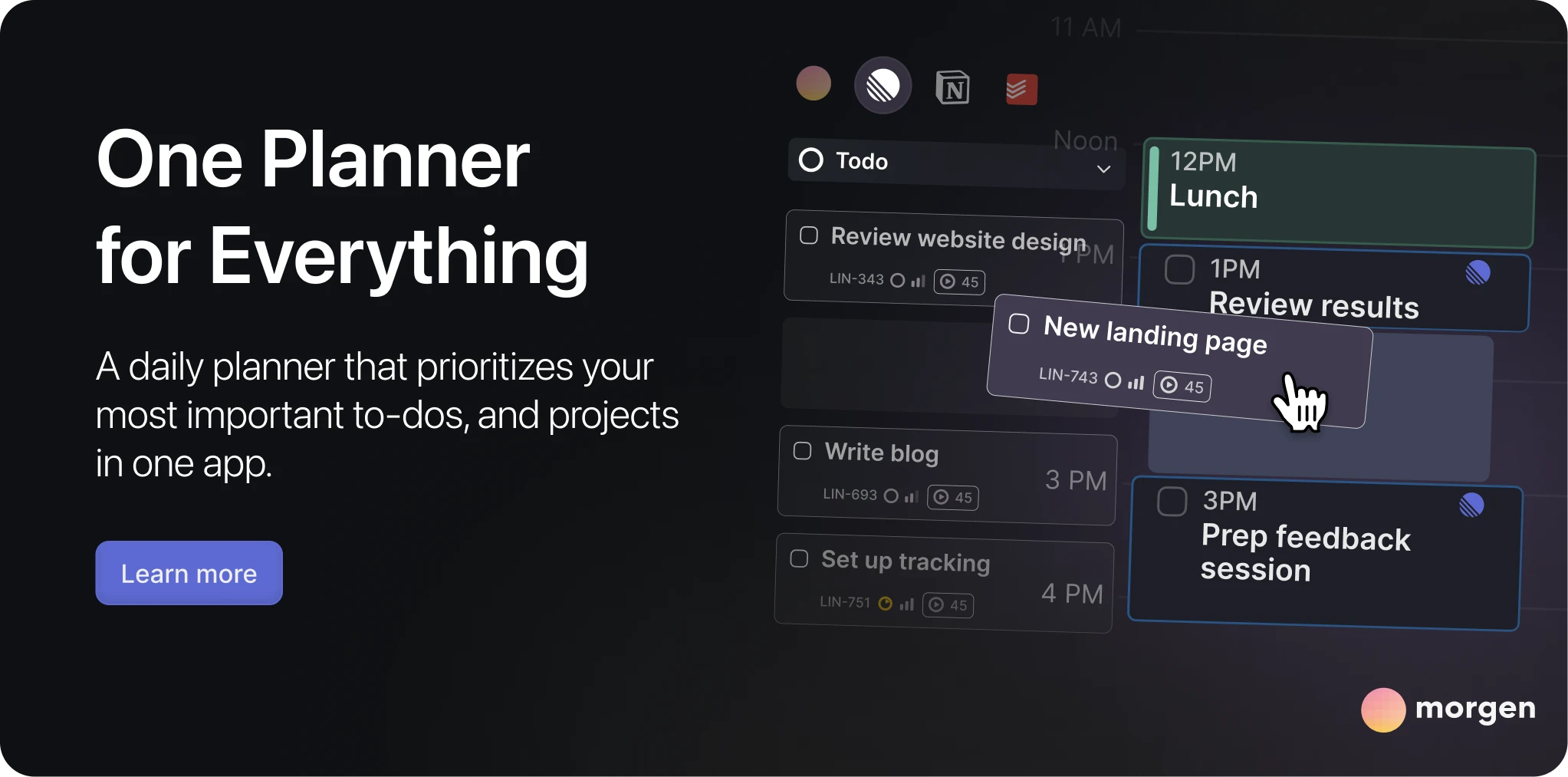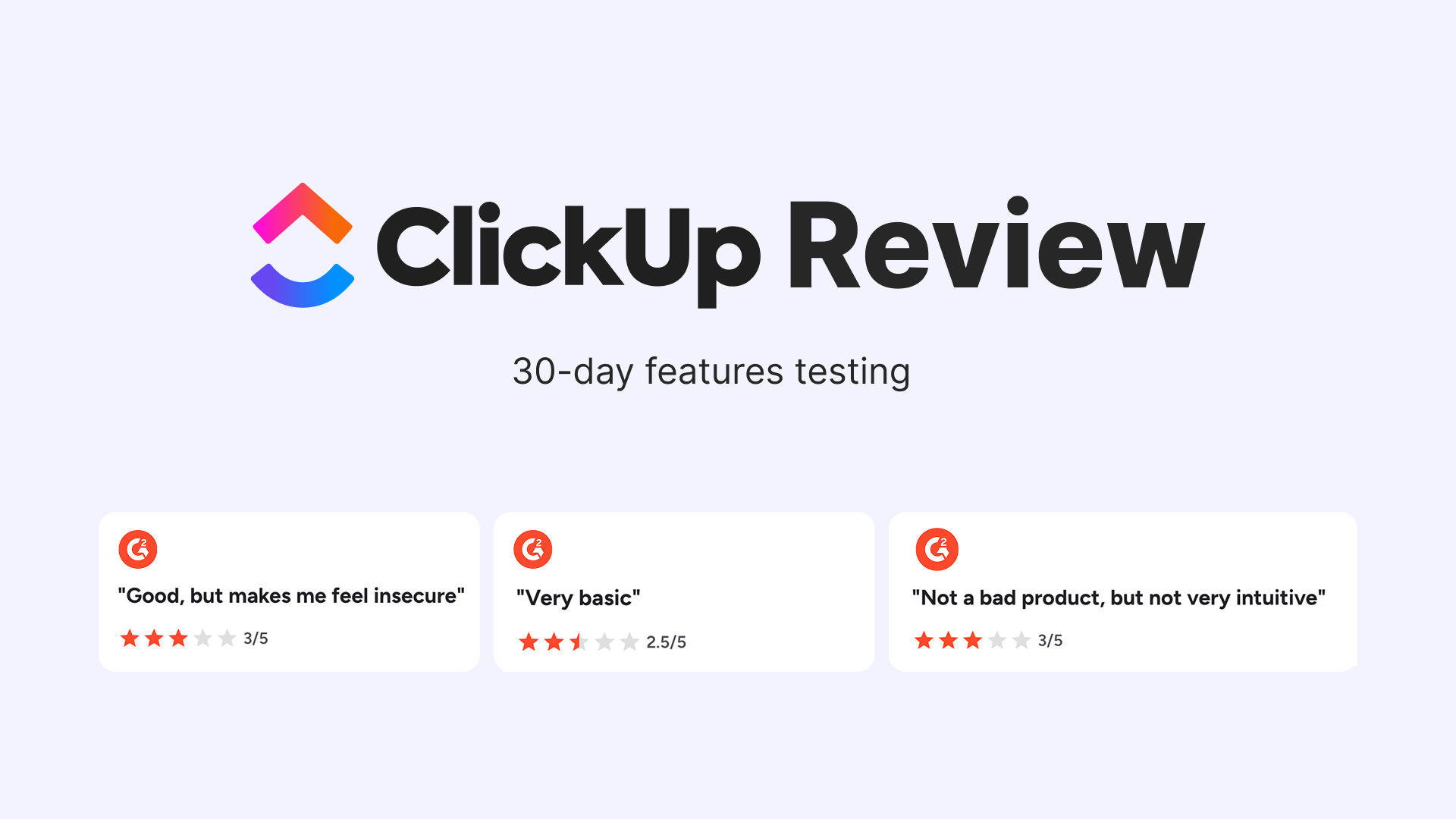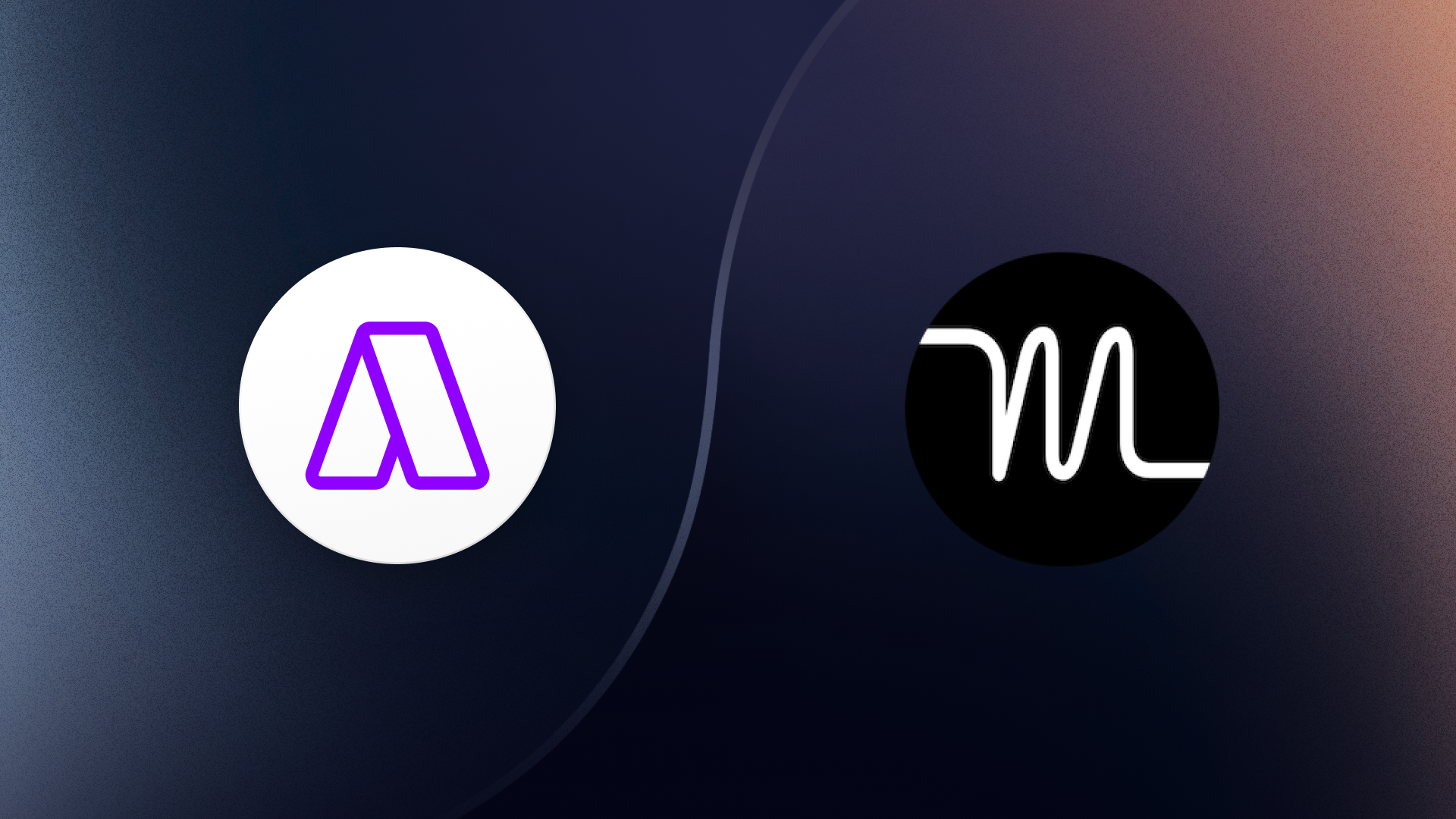How to Manage ClickUp Tasks by Energy Levels with an AI Planner

ClickUp is a powerhouse for task management, but here's the problem: having all your tasks organized doesn't automatically tell you what to prioritize and when to work on them.
You might have tried color-coding, different prioritization frameworks, and categorization, but you've found yourself staring at a list wondering, "What should I tackle first, and when?".
This is where AI planners step in to bridge the gap between task management and intelligent scheduling. Instead of manually dragging tasks to your calendar or playing scheduling Tetris every morning, an AI planner can suggest optimal times for your ClickUp tasks based on your priorities, energy levels, deadlines, time estimates, and available time slots.
The ClickUp scheduling problem
Decision Paralysis
Users are overwhelmed by long task lists and spend excessive time deciding what to work on, draining mental energy before actual work begins.
Manual Calendar Overload
Tasks are manually transferred from ClickUp to a calendar, often leading to overbooking or poorly timed scheduling (ie. creative tasks during low-energy periods).
Reactive Workflow
Users default to working on whatever feels urgent, neglecting important but non-urgent tasks until they become emergencies.
The issue isn't your task management. It's the gap between planning and execution.
A quick list of AI planners with ClickUp integration
An AI planner acts as the bridge between your ClickUp tasks and your calendar. Instead of you deciding when to work on each task, the AI analyzes multiple factors simultaneously:
- Your available time slots (based on your calendar)
- Task deadlines and priorities (synced from ClickUp)
- Your energy patterns (set up by you in the calendar with a feature like Morgen’s Frames)
- Task duration estimates (either from ClickUp or your input)
- The energy required for the task (defined by you in ClickUp)
The best AI planner suggests a schedule that doesn't just fit tasks into empty slots, but matches the right work to the right time.
For a detailed guide on what to consider when choosing an AI planner, head here.

Set up AI-friendly ClickUp task properties
To make the most of your AI planner, you need to offer it the right kind of data. This data will be pulled directly from your ClickUp task properties and is critical to the effectiveness of your AI planner.
Step 1: Create a task
- Inside your list, create a new task
- Click on the task to open it
- Fill in the necessary details

Step 2: Required fields
These fields are the basis on which the AI Planner decides what to suggest. Use them to feed the AI Planner with better information about your work.
- Task name
- Description (for context)
- Assignees (if you’re in a team, distinguish who is responsible for which tasks)
- Due dates (for deadline awareness)
- Tags (ex. tag tasks by project, energy levels, etc.)
- Priority
- Time estimate (you can later edit this to reflect real time spent)
- Subtasks

Using ClickUp with an AI planner
Step 1: Connect your ClickUp account with Morgen
Morgen integrates with ClickUp, pulling in your tasks, deadlines, and priorities. Once connected, your ClickUp tasks appear alongside your calendar events in a unified view.

- Download Morgen
- Use shortcut P to open Preferences
- Head to Tasks and projects and choose ClickUp
- Select your workspace
- Choose if you want to import all tasks or only tasks assigned to you

- Finish by selecting the Lists of tasks you want to import
Step 2: Set up your energy zones
This is where most people skip ahead. For effective AI scheduling, sequencing your day based on your energy levels helps the AI understand your patterns and give better suggestions for your planning.
Head to Morgen and set Frames for your:
- High Energy: Your peak focus hours (often 9-11 AM for most people)
- Medium Energy: Good for collaborative work or moderate complexity tasks
- Low Energy: Perfect for admin work, emails, or routine tasks
When you tag tasks in ClickUp with energy requirements, you can specify them in your Frames, and the AI suggests an energy-optimal plan with peak hours and energy dips.
In Morgen app:
- Drag your mouse on the calendar at the time you wish to define your energy level and choose Frame

- Click on Filtered tasks and select ClickUp as the task manager from which the AI Planner creates your schedule

Step 3: Set task parameters in Frames
For each Frame, you can specify what kind of task should be scheduled. The AI Planner then considers:
- Time estimate: How long do you think it'll take
- Deadline: When it absolutely must be done
- Priority: How important is it relative to other tasks
Morgen's AI uses these parameters to calculate the Morgen Priority Factor, a weighted score that considers urgency, importance, effort, and how long the task has been sitting in your list.
- When defining the Frame, you can specify the types of tasks you want to focus on.

For example, when creating a plan based on energy levels, we recommend filtering tasks as:
High energy Frame = 🔥🔥🔥
Medium energy Frame = 🔥🔥
Low energy Frame = 🔥
- You can keep further specifying the tasks you want to be scheduled for the Frame, such as their status or project.
Hint: be cautious not to over-filter your Frame, such that the AI Planner will struggle to find sufficient tasks to schedule.

How Morgen’s AI Planner makes scheduling decisions
Let's say you have three ClickUp tasks:
- Write quarterly report (high energy, 3 hours, due Friday)
- Review marketing proposals (medium energy, 1 hour, due Wednesday)
- Update team on project status (low energy, 30 minutes, due Thursday)
A basic AI planner would look for empty slots and fill them.
Morgen's AI Planner thinks differently:
Monday 9 AM: Your high-energy Frame opens up. The AI suggests starting the quarterly report with 🔥🔥🔥 energy required, 4-hour duration, and due date of tomorrow. Not simply because it's due soon, but because it requires the most energy.
Tuesday 2 PM: A medium-energy Frame becomes available. Perfect for reviewing marketing proposals with 🔥🔥 energy required, 2-hour duration, and due date on Wednesday. It needs focus, but not your absolute peak performance.
Wednesday 4 PM: Your low-energy Frame appears. Ideal for your team update with 🔥 energy required. Important but not cognitively demanding, scheduled according to your energy window.

The AI doesn't just schedule tasks, it optimizes when you work on them based on your preferences, rather than assuming (wrongfully) that peak performance is constant.
Advanced Features for ClickUp Power Users
Scheduling multiple sessions
You can break a large task by scheduling a shorter session (or mixing a long session with shorter ones). The AI Planner is aware of the estimated duration from ClickUp and schedules the remaining time you should spend on the task.

How to do it:
- Set up Frames and use the AI Planner
- Adjust durations by dragging the bottom edge of each block
- The AI Planner will automatically split the remaining session and suggest it elsewhere in your schedule
- (Optional) Move the remaining session anywhere on your calendar
If there are ClickUp tasks with a due date at risk but that don’t fit in the calendar, they’ll be listed on the side so you can decide if one of those needs to be prioritized over what’s recommended.
Time tracking
Track real-time spent on tasks and sync it back to ClickUp for accurate reporting.

How to do it:
- Once a scheduled task is completed, adjust the time block if the session took more or less time than expected.
- Complete a scheduled ClickUp task in Morgen.
- When prompted, confirm that the time tracked should be reported to ClickUp.
Rescheduling due dates
When new tasks suddenly appear, your whole plan can get wrecked. Keep deadlines realistic and synchronized across both tools.

How to do it:
- In your task list, right-click the due date to edit or drag the due date to a new day in the calendar.
- If you have a time block for a task after the due date, Morgen will prompt you, asking if you want the due date to be moved.
- Confirm the change to sync the new due date back to ClickUp.
You can choose to see your due dates on your calendar, easily identified by a finish line icon. To display your due dates, open the View menu in your task panel > and check Manage due dates on the calendar.
Add Workflows
You can automate repetitive calendar tasks such as syncing calendars, automatically scheduling time for travel, and adding buffers around meetings to help maintain a realistic schedule.

- Open Morgen and click on the Workflow icon (two arrows) in the left rail of the desktop > Workflows gallery.
- Choose the workflow you want to set up.
- Follow specific guides to configure it in a few clicks (links below).
Each workflow can be turned on or off at any time and customized to fit how you work.
A full guide can be found here.
Planning Your Week
Here's how a typical week flows with ClickUp and Morgen working together:
Sunday Evening: Review your ClickUp tasks for the week. In Morgen, use AI Planner to generate an initial schedule based on your upcoming calendar and task parameters.
Monday Morning: Check your schedule for the day in Morgen. See what's planned for the day and make any adjustments. The AI has already considered your deadlines and energy patterns (thanks to Frames).
Throughout the Week: Work on tasks as scheduled. When meetings move or new urgent tasks appear, schedule them in your calendar. In the case of a conflict, the AI Planner offers a rescheduling option.
Common Pitfalls and How to Avoid Them
Over-Rigid Scheduling
Set up your preferred buffer time and intensity setting (ex. you can choose balanced mode with 10-minute breaks every hour). This creates some wiggle room in your day for unexpected opportunities, urgent requests, or creative breakthroughs.
Ignoring Energy Patterns
The AI is only as good as the parameters you give it. If you consistently mark high-energy tasks but never define your high-energy windows, the scheduling suggestions will be suboptimal.
Forgetting to Update Task Estimates
If you consistently underestimate how long tasks take, your schedule might become overpacked. Keep your time estimates updated based on actual completion times. Morgen automatically syncs how long the ClickUp tasks took, so you can compare time spent with time estimated to find patterns.
Not Using the Suggestion Feature
Remember: Morgen suggests a plan, you decide. You’re free to adjust the plan as it’s being suggested by moving tasks around, choosing to remove or add tasks in, or adding breaks and buffers.
The Real Benefits
After a few weeks of using ClickUp with Morgen, you'll notice:
- Reduced Decision Fatigue: You spend less mental energy on task prioritization.
- Better Energy Management: Your most demanding tasks get scheduled when you have the cognitive capacity to handle them.
- Improved Deadline Management: Nothing falls through the cracks because the AI ensures adequate time is allocated before deadlines.
- Realistic Planning: The AI builds in buffer time and breaks, preventing the over-scheduling that leads to burnout.
- Adaptive Scheduling: When priorities change, you can reschedule your plan to fit your updated priorities.
The Bottom Line
ClickUp excels at task management, but it leaves the bulk of the work of prioritization and planning to you. AI planners like Morgen fill the gap by creating schedules that match your work to your capacity.
The goal isn't to automate your decision-making. It's to eliminate the cognitive overhead of scheduling logistics so you can focus on work that matters. Your ClickUp tasks deserve to be worked on when you have the energy, focus, and time to do them well.




